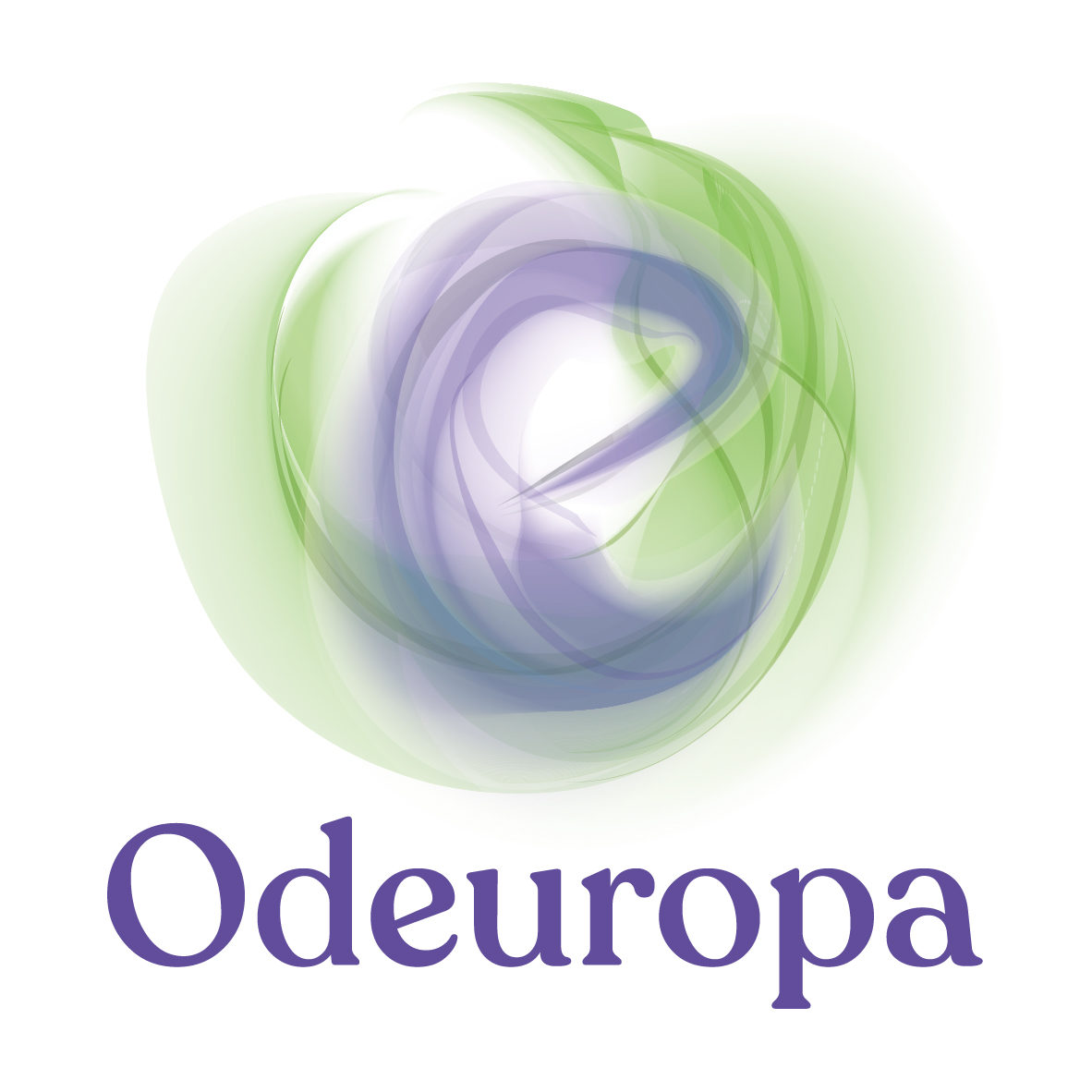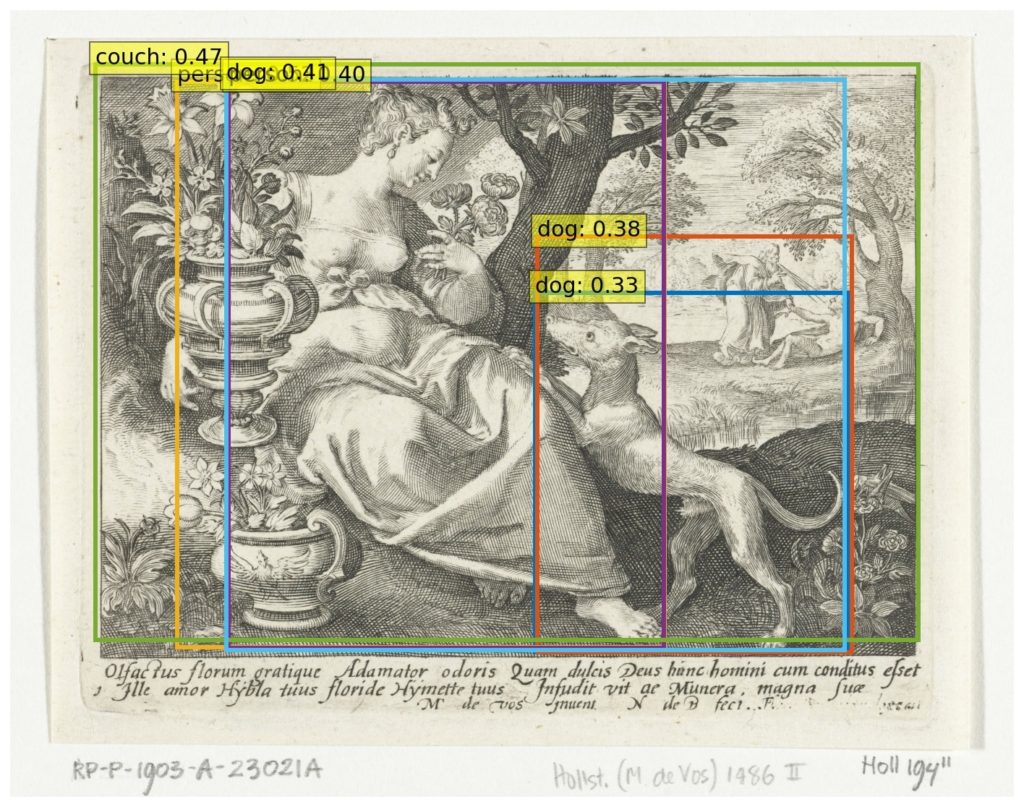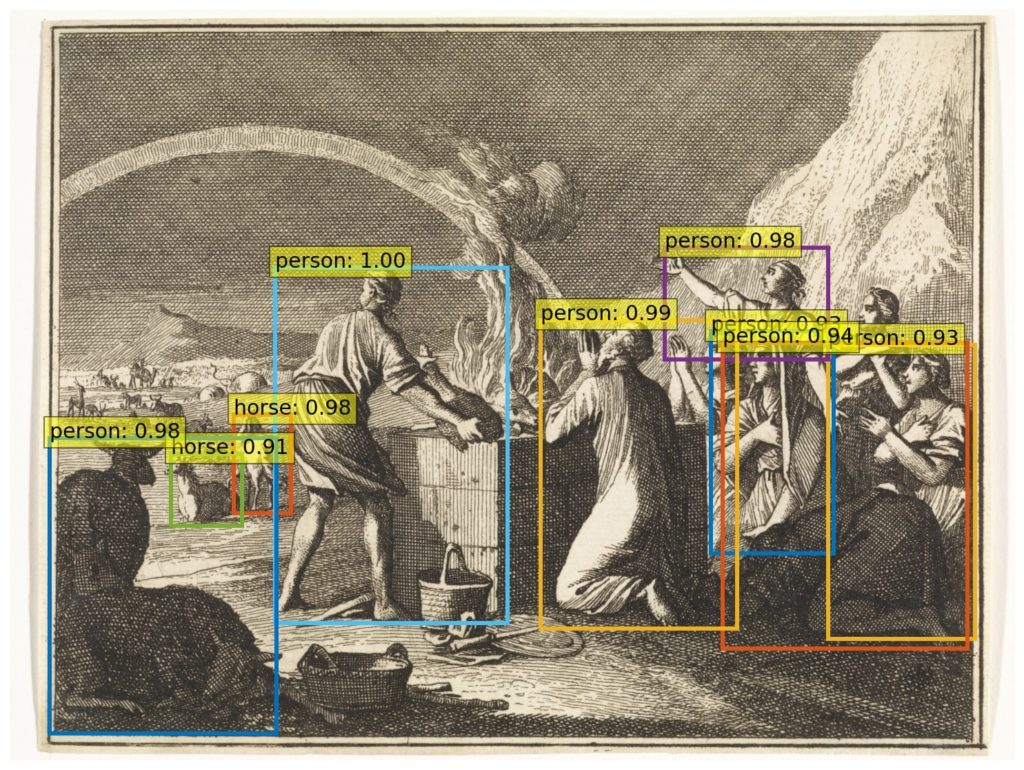Identifying visual references of olfactory phenomena in artworks is an important way to uncover how Europe may have smelled in the past and how smell was represented. The computer-vision team of the Odeuropa project is currently working on methods which would automatically extract these references from various large collections of European artworks by applying, modifying, and extending state-of-the-art object detection methods. In order to collect and extract these olfactory references using computer recognition, it is necessary to first identify how smell is visually represented or depicted in historical artworks.
To provide an example of how this works, we used the print Smell (1581-1656) by Nicolaes de Bruyn, which is currently housed at the Rijksmuseum in Amsterdam.
In the sixteenth century, the pairing of a woman with a dog was used as a visual depiction or personification of the sense of smell. Since the object detection method was able to identify the dog and the woman, this would seem like an effective system. However, there are certain challenges which come with this detection. Firstly, not all pairings of people or women with dogs are ‘olfactory’, for example in other centuries a dog on the lap or feet of a woman represents fidelity, as seen in Jan van Eyck’s Arnolfini Portrait (1434).

This presents us with the challenge of distinguishing when a dog is or is not ‘olfactory’ in nature. A second challenge is that the olfactory gesture of the woman smelling the flowers was also not detected by computer recognition. This poses further limitations on detecting olfactory elements in paintings.
Many olfactory-related narratives can also be found in the Bible, the Sacrifice of Noah (Genesis 8:20) for example. The print, Sacrifice of Noah after the Flood by Casper Luyken, shows Noah creating a burnt offering of animals, combined with the usual “Covenant of the Rainbow” in the background.
These types of olfactory narratives reveal more limitations of existing object detectors, while the people and animals were easily detected but the rainbow and cloud of smoke were not, hence overlooking the olfactory element of the artwork. This could be because these object detection systems are limited to the data with which they have been trained, leading to two problems. Firstly, since the detectors are trained with photographic data, their effectiveness decreases when applied to images with an artistic style such as historical paintings and prints. Secondly, it could be that certain objects (like smoke and rainbows) were either underrepresented or not at all part of the detector’s training data.
In order to tackle these issues of computer recognition, we will apply and modify domain adaptation techniques in order to improve the detection abilities on artistic image domains. After implementing a working object detection system, we plan to incorporate art historical knowledge which would also enable our system to recognize complex and context-specific olfactory references.


